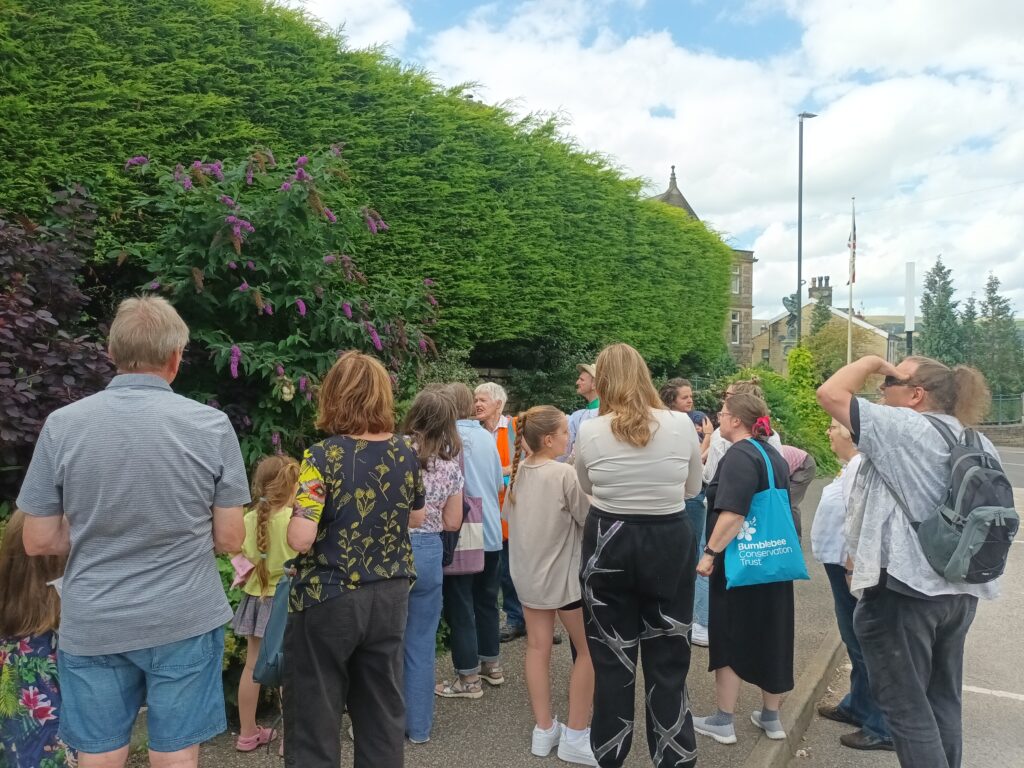Concept and aims
The ‘Buzzing Stations’ project was established when station groups in the Peak District, including those at Buxton, Glossop, and Hadfield, learnt about a rare and endangered bumblebee native to the High Peak, the Bilberry Bumblebee.
With the support of the High Peak & Hope Valley Community Rail Partnership, the Bumblebee Conservation Trust (BBCT), and Northern, the groups set about developing and delivering a range of activities to ensure their station gardens were bee-friendly habitats.
One of the scheme’s main aims was to raise awareness of the environmental value of station gardens and planters for bumblebees. With 97% of wild meadows lost in recent years, small, connected areas offer bumblebees the chance to continue pollinating flowers, which is vital for food production.
The work also aligned with the BBCT’s ‘Pollinating the Peak’ project, which also used the concepts of Buzzing Communities, Buzzing Schools, and Buzzing Tourism.
What happened
The partners involved in the project devised a list of simple things that station groups could do to help support their local populations of bumblebees and invited groups from across the country to get involved. The ideas included:
- Having a look at BBCT’s website for ideas;
- Installing some pots of flowering plants – go for early and late flowering types;
- Building a planter unit or making a garden and filling it with native wildflowers;
- Setting aside an area, allowing weeds to grow, maybe adding native wildflowers;
- Sowing native wildflower seeds anywhere they might grow;
- Stopping any spraying of chemicals that might harm insects;
- Working with others to provide bee corridors – pathway routes full of nectar;
- Mixing up the varieties of flowers you grow – go wild, go native, lots of nectar;
- Extending the flowering period to prolong the nectar season – go early, go later;
- Letting station users know what you’re doing so they can also play their part.
At Buxton, the Friends of Buxton Station built the ‘Bumblebee Express,’ a special planter made from recycled railway sleepers that they filled with moorland plants designed to nurture and feed the bees all year round, including bilberry flowers, heather, clover, and bird’s foot trefoil. The planter was accompanied by artwork and information explaining the project and the importance of bees’ role in pollination.
Specially designed planters with flowers specifically chosen to attract bumblebees were also installed at Glossop and Hadfield stations, with two local schoolchildren acting as project ambassadors with responsibility for the ongoing care and maintenance of one of the planters at Hadfield Station, supported by the station group.
Results
The project continues into 2023, with various station groups now leading bumblebee safaris in their local areas, encouraging people to appreciate the wildlife on their doorstep, learn about the habitats that bees and other species need to survive, and get involved in protecting local bee populations.
Many Peak District stations now have posters and signage with information on the project, and details of Buzzing Stations bumblebee safaris and walks around the High Peak area are also available, including self-guided ones at Buxton and Chapel-en-le-Frith stations. This complements BBCT’s ‘Walking with Bumblebees in and around Derbyshire,’ a guide highlighting nine local walks with lots of well-explained information, including how to spot the rare Bilberry Bumblebee.
The project has been recognised for its positive contribution to enhancing local biodiversity and wildlife habitats, with the Friends of Buxton Station receiving a 2021 Bees’ Needs Champions Award from the Department for Environment, Food & Rural Affairs for their conservation work in supporting pollinators.

